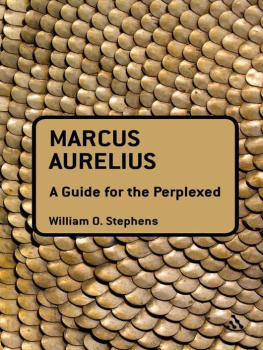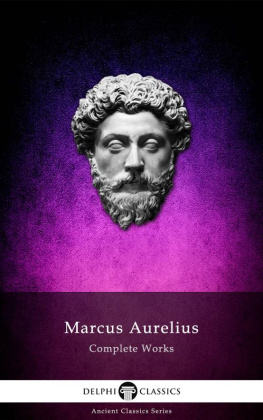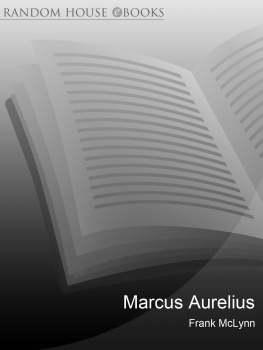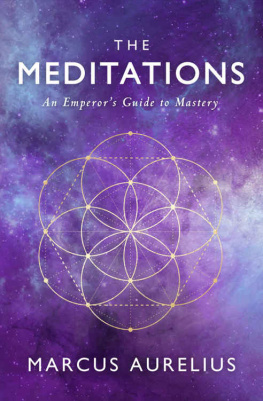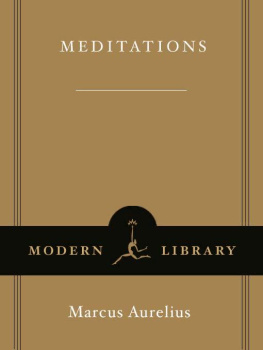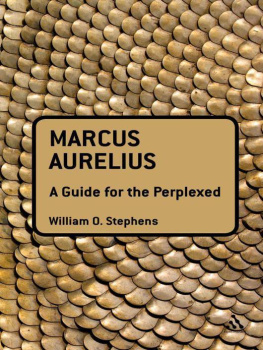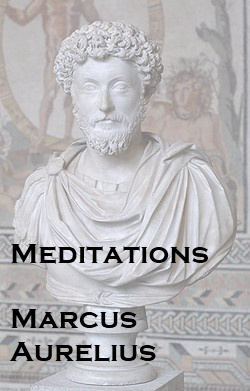MARCUS AURELIUS:
A GUIDE FOR THE PERPLEXED
Continuum Guides for the Perplexed
Continuums Guides for the Perplexed are clear, concise and accessible introductions to thinkers, writers and subjects that students and readers can find especially challenging. Concentrating specifically on what it is that makes the subject difficult to grasp, these books explain and explore key themes and ideas, guiding the reader towards a thorough understanding of demanding material.
Guides for the Perplexed available from Continuum:
Aristotle: A Guide for the Perplexed, John Vella
Plato: A Guide for the Perplexed, Gerald A. Press
Socrates: A Guide for the Perplexed, Sara Ahbel-Rappe
Stoics: A Guide for the Perplexed, M. Andrew Holowchak
Suetonius: A Guide for the Perplexed, Tristan Power
MARCUS AURELIUS:
A GUIDE FOR THE PERPLEXED
WILLIAM O. STEPHENS

Continuum International Publishing Group
The Tower Building, 11 York Road, London SE1 7NX
80 Maiden Lane, New York, NY 10038
www.continuumbooks.com
William O. Stephens 2012
All rights reserved. No part of this publication may be reproduced or transmitted in any form or by any means, electronic or mechanical, including photocopying, recording, or any information storage or retrieval system, without prior permission in writing from the publishers.
William O. Stephens has asserted his right under the Copyright, Designs and Patents Act, 1988, to be identified as Author of this work.
British Library Cataloguing-in-Publication Data
A catalogue record for this book is available from the British Library.
ISBN: 978-1-4411-0179-2
Library of Congress Cataloging-in-Publication Data
Stephens, William O., 1962-
Marcus Aurelius: a guide for the perplexed/William O. Stephens.
p. cm.
Includes index.
ISBN 978-1-4411-0810-4 (pbk.) ISBN 978-1-4411-2561-3 (hardback) 1. Marcus Aurelius, Emperor of Rome, 121180. 2. Marcus Aurelius, Emperor of Rome, 121-180. Meditations. 3. Stoics. I. Title.
B583.S74 2011
188dc23
2011017882
For my father
CONTENTS
LIST OF ILLUSTRATIONS
Bust of Marcus Aurelius in the first portrait type, circa 140 CE
Genealogical diagram
Marcus Roman Empire
The Northern Frontiers
ACKNOWLEDGMENTS
Many are to thank for helping me complete this book. I am grateful to the Graduate School of Creighton University for the 2010 Summer Faculty Research Scholarship that supported this project. I thank the Kripke Center for the Study of Religion and Society of Creighton University for the grant that funded a course release for time to work on the book Fall semester 2010. Jeff Hauses comments on and for gently prodding me to provide the glossary, the genealogical diagram, the maps, and the photograph. Selecting and obtaining the right to reproduce the photograph from the Deutsches Archologisches Institut, Universitt zu Kln, and composing the description of it would have been impossible without his assistance. All of these friends were generous with their time, talents, and encouragement, and all have my gratitude. Naturally, I am responsible for the shortcomings of the book that remain.
W. O. S.
Omaha, July 2011

Marcus is portrayed as a handsome, intelligent crown prince of about nineteen years of age, with oval-shaped eyes, a strong nose, highly arched brows, and a well-formed mouth. Typically for his time, the sculptor contrasts the smooth, polished skin with the rough, textured hair. The locks of hair are sculpted with fine, careful detail. The grooves of the sculptors drill are very thin. The individual hairs of the crinkle of curls are suggested with a meticulous technique of the chisel. The sculptor has enlivened the face by different sizes of the upper eyelids and has sought a certain degree of naturalism through fluid contouring. On the center of the forehead a few ends of the locks of hair are split, amplifying the naturalistic effect. The artists tremendous talent is conspicuous in this splendid and almost completely preserved bust, which stands 0.775 m. The bust is possibly from a villa in Lanuvio.*
*See Paul Zanker, Katalog der rmischen Portrts in den Capitolinischen Museen und den anderen kommunalen Sammlungen der Stadt Room, Band I: Text Kaiser- und Prinzenbildnisse, Aufnahmen von Gisela Fittschen-Badura. Von Zabern: Mainz am Rhein, 1985, p. 68.


CHAPTER 1
THE MAN, THE EMPEROR, THE THINKER
THE MAN
Marcus Aurelius was one of the most interesting figures in the ancient world. For the historian, this is largely because he was the last of what were regarded as the five good emperors of the Roman Empire and the man who presided over the first stirrings of the flood of troubles which would nearly destroy the empire in the next century. These emperors, Nerva, Trajan, Hadrian, Antoninus Pius, and Marcus Aurelius, ruled from CE 96 to 180, a period believed to be a happy, prosperous, golden age of antiquity. Marcus lived during nearly three-quarters of this period, from CE 121 to 180, and reigned from 161 to 180. For the historian of philosophy, on the other hand, Marcus is of particular interest as the only full-blown philosopher ever to have been a king. He was the last of the great Stoic philosophers of antiquity to have bequeathed to posterityin his case, unintentionally, it seemsa substantial body of philosophical writing. These thinkers, Lucius Annaeus Seneca (c. 4 BCECE 65), Gaius Musonius Rufus (CE c. 25c. 95), Epictetus (CE c. 55c. 135), and Marcus Aurelius, not only wrote about Stoicism, as the great Roman statesman and orator Cicero had. They themselves were Stoics and sought to live their lives in accordance with Stoic philosophy. For the last nineteen years of Marcus life, living by Stoic ideals also meant ruling as a Stoic should. The Roman empire of Marcus time was vast. It was populated by millions of people of many ethnicities and stretched from North Africa to the rivers Rhine and Danube, from northern England (Britannia) and Germany (Germania) to Egypt (Aegyptus), and from Morocco (Mauretania) to eastern Turkey (Cappadocia) and Syria. Accordingly, we cannot help but suppose that the responsibility of ruling such an enormous empire would have been felt to be tremendously heavy by a principled, philosophically serious man of solemn duty. This Guide for the Perplexed will offer evidence that Marcus Aurelius was such a man.
JUDGING A BOOK BY ITS TITLE
We do not know what title, if any, Marcus himself gave to the collection of philosophical notes attributed to him. Many centuries after he wrote these notes, To Himself (Eis heauton) appeared as the title of the subsequently lost Greek manuscript used for the first printed edition. Titles English translators have used include His Meditations Concerning Himself

